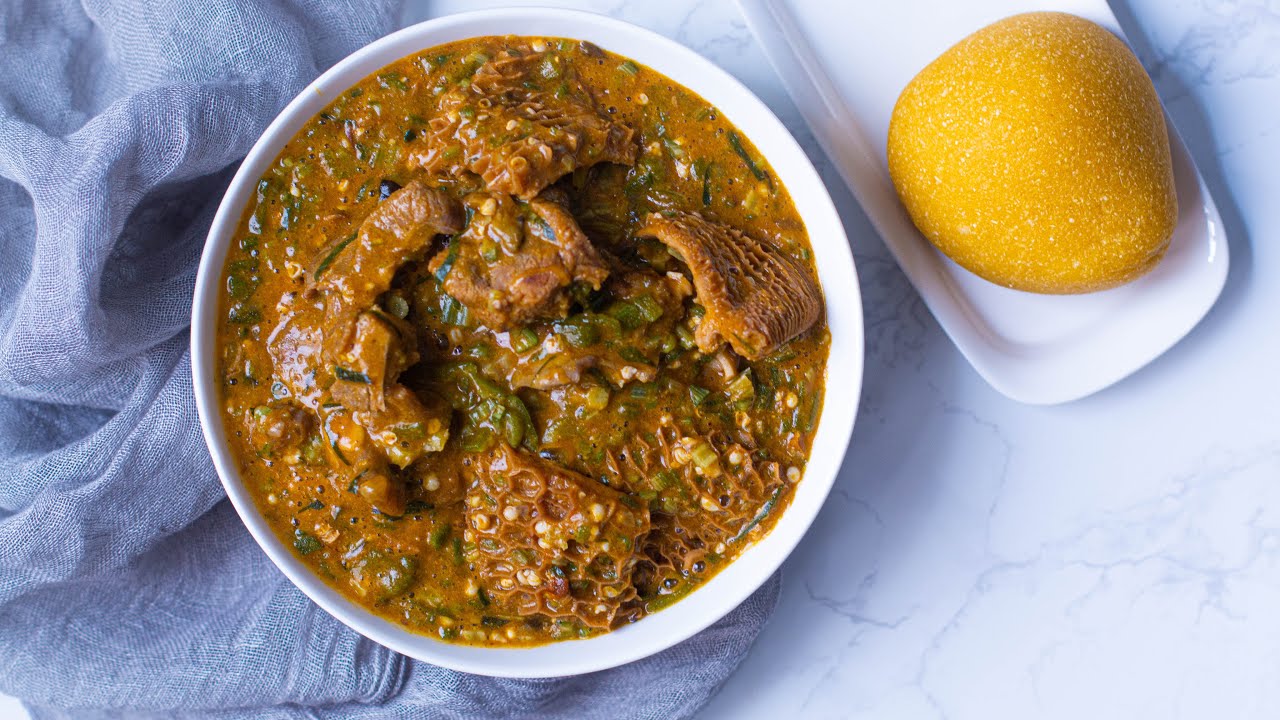Ogbono soup is a Nigerian soup made with ground dry Ogbono seeds. Ogbono seeds (the local name for Irvingia) originated and were first grown in Southern Nigeria with different local variations.

According to research by one food specialist, Ogbono is an indigenous forest tree associated with plants classified as ‘non-timber forest products.
It has various indigenous names among Nigerians. The common use of the word “Ogbono” in general Nigerian parlance stems from the Igbo name for the word.
Among the Nupe, it is called ‘pekpeara’, ‘ogwi’ in Bini, ‘uyo’ in Efik, and ‘oro’ or ‘apon’ in Yoruba.[6] Although Ogbono (dika nut) and ugiri, the Igbo name for bush-mango, are very similar indeed and often regarded as equivalents, there is technically a distinction.
What are the Ingredients for Ogbono?
The ground Ogbono seeds are used as a thickener, and give the soup a black coloration. Besides seeds, water, and palm oil, it also contains meat and/or fish seasonings such as chili pepper, leaf vegetables, and other vegetables.
Typical leaf vegetables include bitterleaf and celosia. Typical other vegetables include tomatoes and okra.
Typical seasonings include chiles, onions, and iru (fermented locust beans). Typical meats include beef, goat, fish, chicken, bushmeat, shrimp, or crayfish.
What Can Ogbono Soup Be Eaten With?

The soup can be eaten with fufu, or with pounded yam.
In other countries, the soup may be available in packaged prepared form in some markets that specialize in Western African foods. Ogbono soup has a mucilaginous draw texture, similar to okra soup.
In conclusion, Ogbono Soup is more than just a meal; it represents a culinary tradition that has endured through generations, offering both nourishment and a sense of cultural identity.
Its rich flavors, nutritional benefits, and cultural significance make it a beloved dish among many, both within and beyond West Africa.


Leave a Reply